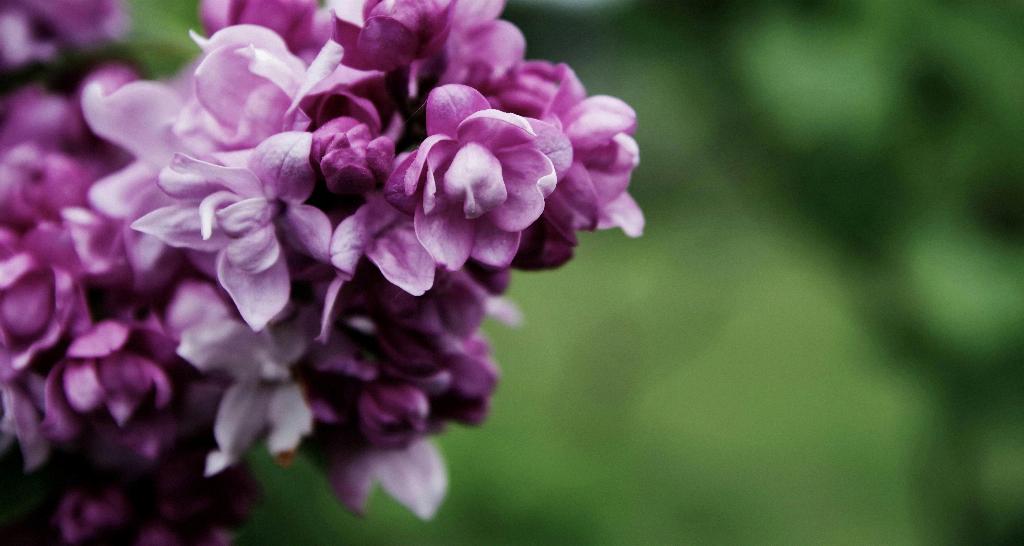Lilac trees, with their vibrant blooms and sweet fragrance, truly herald the arrival of spring. Each year, these deciduous shrubs adorn landscapes with a visual and olfactory spectacle. Known scientifically as Syringa, lilac trees are cherished for their lush, colorful flower clusters, which range in hue from light lavender to a deep, vivid purple. Although often thought of as quintessential to temperate climates, lilacs are surprisingly versatile and can be found enhancing gardens across various regions. Their popularity not only stems from their aesthetic appeal but also from their relative ease of care, making them a favored choice among both novice gardeners and seasoned horticulturists alike.
Varieties of Lilac Trees: Colors, Sizes, and Fragrances
Lilac trees come in several varieties, each with its unique charm and characteristics. From the majestic ‘Charles Joly’ with its deep magenta blooms to the delicate ‘Miss Kim’ which features pale lilac flowers, there’s a type to suit any garden’s color scheme. The ‘Bloomerang’ variety, notable for its ability to bloom twice a year, offers extended enjoyment, while the traditional ‘Common Lilac’ remains a favorite for its robust fragrance and classic beauty. These variations in color, size, and blooming patterns provide ample opportunity for personalization in landscape design, allowing you to create a truly unique garden experience.
The Best Growing Conditions for Thriving Lilac Trees
Lilac trees thrive under specific conditions—full sun, well-drained soil, and cool weather. A minimum of six hours of direct sunlight daily is ideal for optimal growth and bloom density. Lilacs prefer slightly alkaline soil, which enhances their ability to absorb nutrients effectively. While they are durable plants that can tolerate less than ideal conditions once established, for those first planting lilac trees, ensuring the right soil composition and sun exposure can make a significant difference in the plant’s vitality and longevity.
Step-by-Step Guide to Planting Lilac Trees
Planting a lilac tree is a rewarding endeavor that begins with choosing a suitable spot that mimics their natural, breezy hilltop habitats. Ideal planting occurs in the early fall or spring. Start by digging a hole as deep as the root ball and twice as wide, mixing in some garden lime to enhance the alkalinity if needed. Position the lilac so the top of the root ball is level with the surrounding soil, then backfill with a mix of native soil and compost. Watering it well to settle the soil around the roots will kick off your lilac’s growth on the right foot.
Essential Care Tips for Lilac Trees: Watering, Pruning, and Fertilizing
Caring for lilac trees isn’t labor-intensive but does require attention to a few key practices. Regular watering helps young plants establish roots, though mature lilacs are fairly drought tolerant. Annual pruning keeps trees healthy and enhances flowering. It’s best done right after blooms fade, as next season’s flowers will form on old wood. Fertilizing is seldom required unless growth is stunted, in which case a balanced 10-10-10 fertilizer can be applied sparingly in early spring.
Common Pests and Diseases Affecting Lilac Trees and How to Combat Them
Despite their hardiness, lilac trees are not immune to pests and diseases. Powdery mildew is a common fungal issue, presenting as a white, powdery coating on leaves. Ensuring good air circulation around the plants can prevent this. Aphids and borers are also frequent annoyances that can be managed with appropriate insecticides or natural alternatives like neem oil. Regular inspections of your lilac will help you act swiftly against any potential threats.
The Secret to Encouraging More Blooms on Your Lilac Trees
Who doesn’t want more of those gorgeous lilac blooms? To encourage flourishing, consider the age of your plant—mature lilacs bloom more prolifically than their younger counterparts. Ensuring your lilac is not overcrowded by nearby plants and receives ample sunlight will also improve bloom production. Additionally, judicious pruning of spent flowers can invigorate the plant and possibly lead to more blooms the following spring.
Lilac Trees Through the Seasons: What to Expect Year-Round
While lilac trees are a spectacle in spring, their appeal continues year-round. Summer sees the lush greenery of its leaves, which in some varieties, might yield a secondary bloom. Autumn transforms the foliage into vibrant colors, and even in winter, the stark branches of the lilac tree add structural interest to the garden landscape, especially when frosted with snow.
Incorporating Lilac Trees in Landscape Design: Tips and Ideas
Lilac trees are versatile in landscape design. Use them as hedging or privacy screens, or plant them as standalone specimens in garden corners where they can truly shine. Combining lilacs with other spring-flowering shrubs like forsythia can create staggered blooming times and an extended color display. Always consider the mature size of the lilac when planning, to ensure that it will have enough room to spread and flourish without crowding.
Where to Buy Lilac Trees and What to Look for in a Healthy Plant
When looking to add a lilac to your garden, reputable nurseries or garden centers are your best bet for finding healthy, disease-free plants. Look for lilacs with firm, blemish-free stems and vigorous foliage. Avoid plants with wilted leaves or signs of insect damage. Fall is a great time to buy as you can plant them immediately and let them establish through the cooler months.

Closing: The Lasting Appeal of Lilacs in Home Gardens
The timeless nature of lilac trees continues to endear them to gardeners worldwide. With their delightful fragrance and stunning blooms, they remain a classic symbol of early summer. By following the guidelines detailed above, you can ensure these beautiful shrubs thrive in your garden, allowing you to enjoy the natural charm and serene beauty of lilacs year after year.
